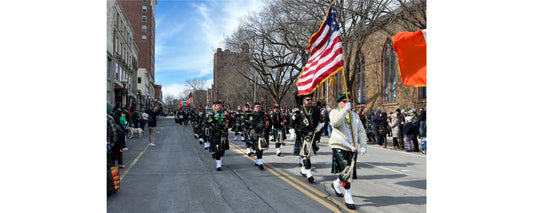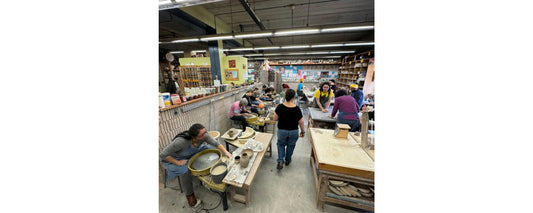When the Beach Boys played, there was “no point in sitting down, except perhaps to keep from fainting,” recalls Sarah Heath of Hamden. Her friend Michael Ross, who grew up in North Haven, witnessed many a bloody hockey game when the New Haven Blades took the ice. There were swing bands and circus acts, boxing matches and rodeos, antique car shows and the Ice Capades.
It all happened at the New Haven Arena.
sponsored by
Built on the southeast corner of Orange and Grove Streets, the Arena was a smaller, grittier precursor to the New Haven Coliseum. Today, the site of the “raw,” smoke-filled, raucous venue, as Ross recalls it, is, ironically enough, the tightly controlled parking lot of New Haven’s FBI field office.
Franz Douskey, a well-known writer and musician and Heath’s husband, recalls the place as “fairly dumpy.” But from 1914 to 1974 it was often the hottest spot in town. “It had that abandoned look and smell,” Douskey wrote in an email. “It was like the smells of sweaty wrestlers, elephants and hockey players had merged, adhered to the walls, floors and distant ceiling, never to go away. No one I knew ever complained.”
There were actually two different arenas at the Grove and Orange site. The first, hailed as “America’s finest arena” by an article in New Haven’s Saturday Chronicle, opened on January 28, 1914, with a Yale-Princeton hockey game. The public could skate as well. There were 800 pairs of rental skates, “six or eight instructors in skating and eight uniformed boys for putting on and removing skates.” That venue was destroyed in a 1924 fire.
The second arena was built by the Podoloff family—brothers Nathan, Jacob and Maurice and their father, Abraham—in 1926, according to the American Hockey League Hall of Fame, into which Maurice was inducted. A stock offering for the second incarnation of the arena describes it as “the only building of its type and the largest public assembly hall in the State of Connecticut,” with a seating capacity of 7,000 as well as committee and conference rooms, a garage, an ice plant and “two office buildings with stores on the street level.”
sponsored by
Both Ross and Douskey were frequent spectators at New Haven Blades games, which Ross recalls as “pretty frightening.” The house was always full, he says. Douskey recalls watching the games “through the chicken wire that protected us from wayward pucks. And I can tell you that most of the snap shots were wayward, as wayward as the players.”
“There was this huge cloud of smoke, because everybody smoked, and it got hot in there… even with the ice,” Ross recalls, “and the ice would start melting.” Blades games were a childhood lesson, he says, in aggression. There were “bloody, awful fights… They didn’t wear helmets or anything back then. They hardly had any equipment.”
Ross remembers, too, seeing the famous 1968 football game between undefeated rivals Yale and Harvard that ended in a 29-29 tie. The high-stakes game was played in Cambridge, so the Arena broadcast it for about 500 New Haveners on a big screen, which was “really unusual” at that time. “Yale was ahead by 16 points with about less than a minute left, and it was that kind of drama,” Ross recalls. The last-minute tie felt like a loss to Yale fans, and Harvard claimed a de facto victory. “All I remember is walking away and not really knowing what to do,” Ross says.
Douskey recalls seeing a long list of famous performers at the Arena including Chuck Berry, Bo Diddley, Ray Charles and the Glenn Miller Orchestra led by Ray McKinley. In one of the Arena’s most publicized moments, The Doors’ Jim Morrison was arrested onstage for what police called “an ‘indecent and immoral exhibition,’” according to The New York Times. That wasn’t the first time police stepped in at the Arena. Ross remembers a police officer running onto the ice to break up a violent hockey fight and suffering a heart attack. But in general, Douskey says, “security was loose… The uniformed cops were there to watch the wrestling and the elephants more than they were there to watch us.”
The New Haven Coliseum was the Arena’s downfall. Upon the Coliseum’s completion in 1972, most of the Arena’s business moved there. But it wasn’t the same, Ross says. At the Arena, “you were right on top of things.” People would walk one block from the bus station at Whitney and Grove—where Bruegger’s Bagels is today—and join the crowd on the sidewalk waiting to get in or purchase tickets, Ross remembers. On the other hand, the Coliseum—bigger, lacking nearby hangouts and run by a production company with tighter security—“was just like… any modern facility,” he says. It had a “totally different vibe.”
As for the Arena, according to a 1974 article in the New Haven Journal-Courier, “an attempt was being made to find an alternative use for the building,” but renovation would have come at a high price tag, and later that year it was finally demolished.
“Dust to dust,” Douskey writes, with more than a hint of nostalgia.
Written and photographed by Kathy Leonard Czepiel. Image, featuring the New Haven Arena in 1934, provided courtesy of the New Haven Museum. This story was originally published on April 13, 2018.









